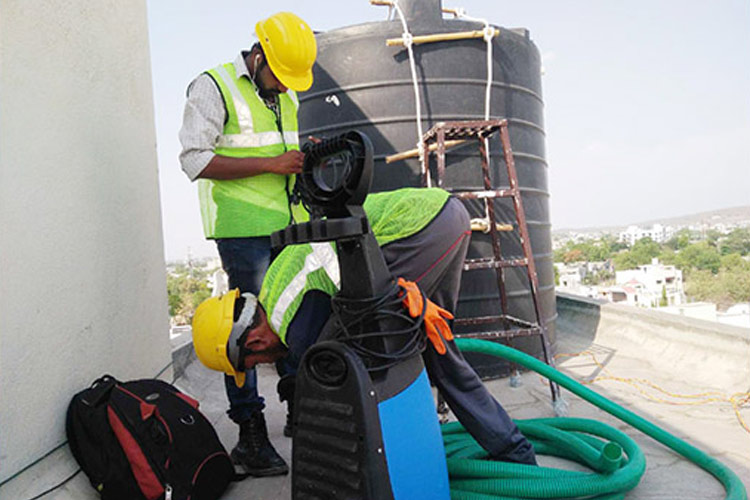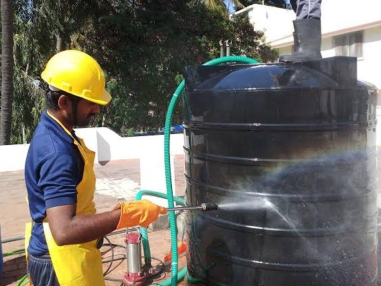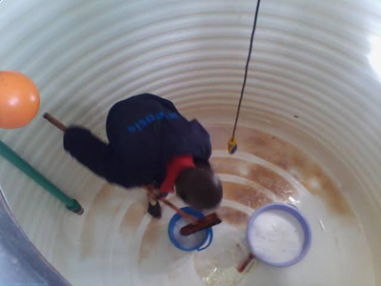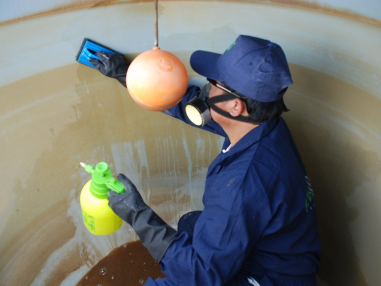Overhead tank cleaning (1000L- 2000L) (1 hr 30 mins)


The cleaning process for overhead tanks between 1000L and 2000L is similar to smaller tanks, but with a few considerations due to their larger size. Here's a breakdown for DIY and professional cleaning options:
DIY Cleaning (1000L-2000L Tanks):
Safety First (even more crucial for larger tanks):
Ensure the ladder you use is sturdy enough to support your weight and the weight of your cleaning bucket.
Have a helper to assist you for stability and safety while working at heights.
Wear gloves, mask, and eye protection throughout the cleaning process.
Cleaning Materials (larger quantities might be needed):
Long-handled scrub brush with a soft head (to reach all areas)
Lint-free cloths
Dish soap or a mild cleaning solution (check your tank's manual for compatibility)
Bleach solution (optional, for disinfection) - diluted properly (typically 1 part bleach to 10 parts water) - use with caution
Bucket (consider a larger bucket to minimize trips up and down the ladder)
Sturdy ladder
Steps (similar to smaller tanks, but consider the extra volume):
Empty the tank completely: Turn off the main water supply and open all taps to drain all the water.
Pre-rinse (optional): If your tank has a drain outlet, consider a pre-rinse with a hose to loosen debris (be mindful of water wastage for larger tanks).
Scrub the tank: Use the long-handled brush and cleaning solution to scrub the tank's interior surfaces thoroughly. Pay close attention to corners and areas with
potential grime buildup. The larger size might require more effort and time for scrubbing.
Rinse thoroughly: This step is crucial for larger tanks as well. Use clean water to rinse the tank interior repeatedly, ensuring all cleaning solution residue is
removed. You can use a hose if your tank has a proper inlet for this purpose, but be prepared for multiple rinses due to the larger volume.
Disinfection (optional): Prepare a diluted bleach solution and carefully wipe down the tank's interior surfaces with a cloth. Ensure proper ventilation while using
bleach. Leave the solution for disinfection as per bleach product instructions. Afterward, thoroughly rinse the tank again to remove all bleach residue.
Cleaning the lid and exterior: While the tank rinses, clean the lid and exterior with a damp cloth and mild soap solution. Wipe them dry with a clean cloth.
Drying: Allow the tank to air dry completely before closing the lid. You can leave the lid slightly ajar to facilitate faster drying for the larger volume.
The benefits of hiring a professional for larger tanks are even more significant:
Safety: Professionals have the equipment and training to clean large tanks safely, minimizing the risk of accidents.
Efficiency: They have experience cleaning large tanks efficiently and can ensure a thorough cleaning in less time compared to DIY.
High-Powered Cleaning: They might use high-powered cleaning equipment for stubborn stains or heavily soiled tanks, which might be unavailable for DIY cleaning.
Proper Disinfection: Professionals can provide a more robust disinfection process if needed, especially for concerns about bacterial contamination in larger water
volumes.
Additional Tips for 1000L-2000L Tanks:
Consider professional cleaning for first-time cleaning: If you haven't cleaned your larger tank before, consider professional cleaning for a comprehensive initial
cleaning.
Schedule regular cleanings: For larger tanks, regular cleaning (every 4-6 months) is even more important to prevent excessive buildup and potential water quality
issues.
Inspect the tank thoroughly: During cleaning, pay close attention to the tank's condition for signs of leaks, cracks, or damage, especially for older tanks.


